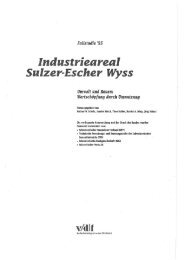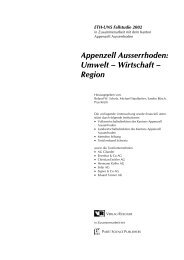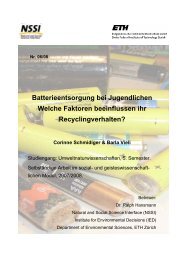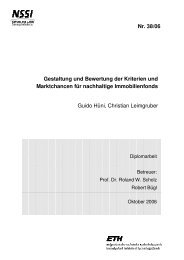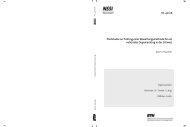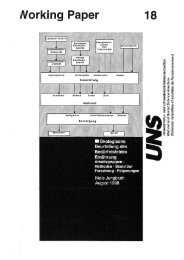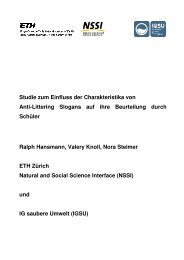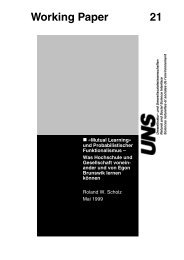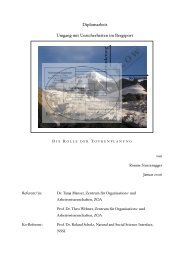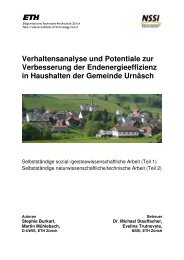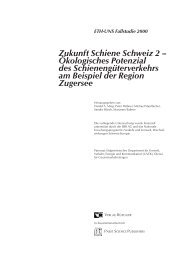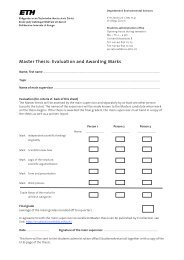Non-road fuel consumption and pollutant emissions ... - BAFU - CH
Non-road fuel consumption and pollutant emissions ... - BAFU - CH
Non-road fuel consumption and pollutant emissions ... - BAFU - CH
Create successful ePaper yourself
Turn your PDF publications into a flip-book with our unique Google optimized e-Paper software.
<strong>Non</strong>-<strong>road</strong> <strong>fuel</strong> <strong>consumption</strong> <strong>and</strong> <strong>pollutant</strong> <strong>emissions</strong> FOEN 2008 50<br />
6.3 Agricultural machinery<br />
The inventories <strong>and</strong> operating hours for agricultural machines were projected by<br />
Agroscope ART on the basis of the figures obtained from the 1996 <strong>and</strong> 2003 censuses<br />
of agricultural operations. The information in the Swiss Federal Vehicle Inspection<br />
Office (EFKO) database could only be used to a limited extent, partly because only<br />
some machines are registered (particularly small machines such as single-axle mowers<br />
<strong>and</strong> single-axle tractors), but also because some registered tractors are not used for<br />
agricultural purposes. This primarily concerns older models, but also tractors used in<br />
forestry <strong>and</strong> for the care of public areas such as woodl<strong>and</strong>s <strong>and</strong> parks. The latter are<br />
included under “forestry machinery” in the “haulers” sub-category, while old models<br />
of tractors are listed under “hobby tractors”. The inventory of chainsaws in the agricultural<br />
segment was based on the number of existing agricultural businesses (63,600 in<br />
2005). The assumption here was that each operation has at least one chainsaw, <strong>and</strong><br />
every second one has two chainsaws.<br />
Inventory<br />
Figure 23 (top left) shows that more than half the agricultural machines are petrol-powered.<br />
This primarily concerns chainsaws (95,000) <strong>and</strong> single-axle mowers (72,560).<br />
Tractors account for 63% of the inventory of diesel-powered machines (107,750 in<br />
2005). The majority of tractors (60%) have an engine rated power between 37 <strong>and</strong><br />
75 kW (average for all vehicles: 59 kW).<br />
Operating hours <strong>and</strong> their development from 1980 to 2020<br />
The specific operating hours of agricultural machines were calculated by Agroscope<br />
ART using three criteria:<br />
> Cultivated areas: calculation of necessary hours of operation based on area of cultivated<br />
l<strong>and</strong><br />
> Second-h<strong>and</strong> tractors: estimate of number of operating hours of second-h<strong>and</strong> tractors<br />
> Calculations based on <strong>fuel</strong> <strong>consumption</strong> figures recorded by the Directorate General<br />
of Customs (OZD).<br />
Based on new calculations made from updated operating hours of agricultural vehicles<br />
for the management of cultivated areas of l<strong>and</strong> (Ammann 2007), Agroscope ART cites<br />
the mean operating hours of tractors as 200 hours p.a. This figure represents an average<br />
for the entire tractor fleet, <strong>and</strong> takes account of the large number of old tractors with a<br />
very low number of operating hours.



